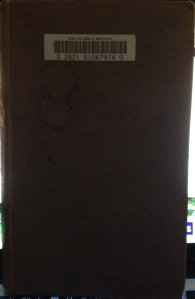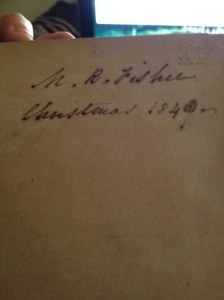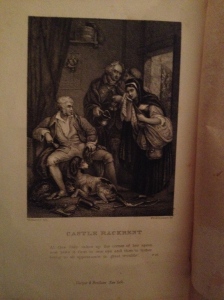As a student majoring in history, I’ve heard of the term marginalia a lot. However, I’ve really only heard about marginalia in terms of medieval history, which features elaborate doodles and drawings of strange figures – something that is clearly not present within Victorian culture. So this was a really interesting project for me. However, this was extremely difficult for me. I searched every term listed on the handout, looking at over twenty books, and found little to nothing. This taught me two things: 1. Old book dust really flares up my allergies and 2. 19th century marginalia might not be as prevalent in our own library as I hoped it to be.
![]()


Fortunately I managed to find a collection of books all marked with the same inscription from the desired time period. In Novels and Tales Volume I by Maria Edgeworth, published in 1846, the inside cover was marked by fountain pen with a name and date: M.R. Fisher, Christmas 1849. This peaked my interest, but several google searches led to no information found on the individual. The book itself was also really interesting to me. The images that adorned the first few pages of the different volumes had me fascinated and intrigued. Another note about the book was just how old and fragile the text was. When I checked this book out it set off the library detectors, and the binding itself seems very fragile.
Overall, what the inscription tells me about how the 19th century used books is that they were a large part of the gift-giving culture. Furthermore, it also gives an understanding about Christmas, and at what age Christmas was being celebrated, as well as how Christmas was celebrated. If I had to make a claim, I’d say it would appear that M.R. Fisher would be a member of the upper to middle class due to the extensive nature of the books given at one time period (the entire collection being ten), as well as the content of the book would be for educated individuals. Furthermore, I would further guess that perhaps M.R. Fisher would be female, considering they were gifted a collection of novels, and during this time period I believe women were the primary audience for novelists. Also, this is a female author, which would further make me believe the inscriber is a woman. However, this is all merely speculation on my end since there is little to no information surrounding the individual.
Exploring the past is always fun. Thanks for sharing this cool article. Love your blog.